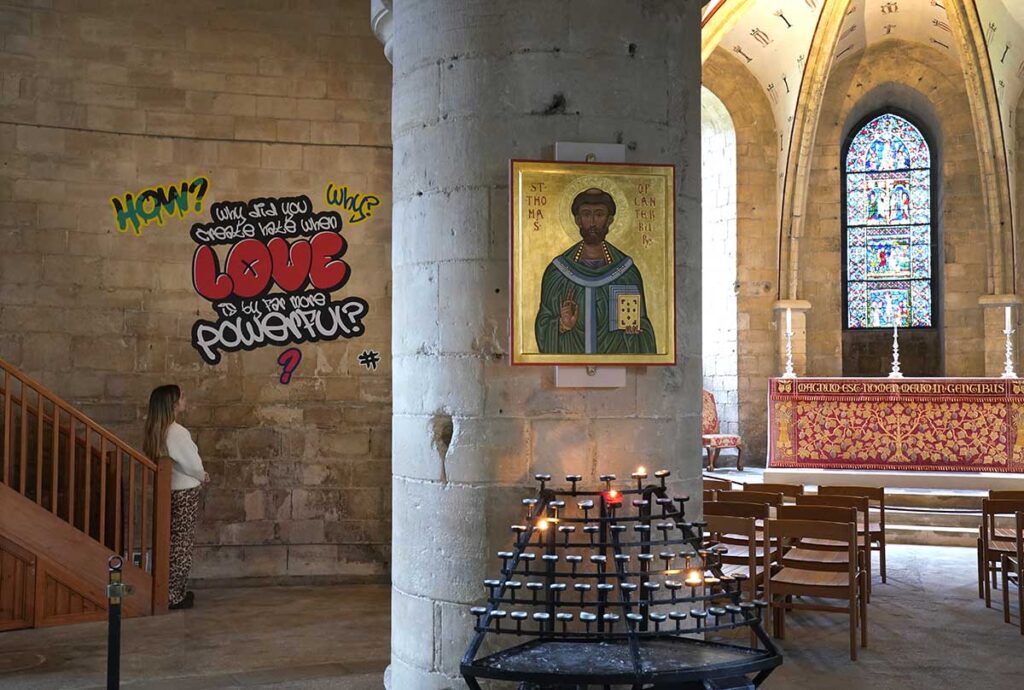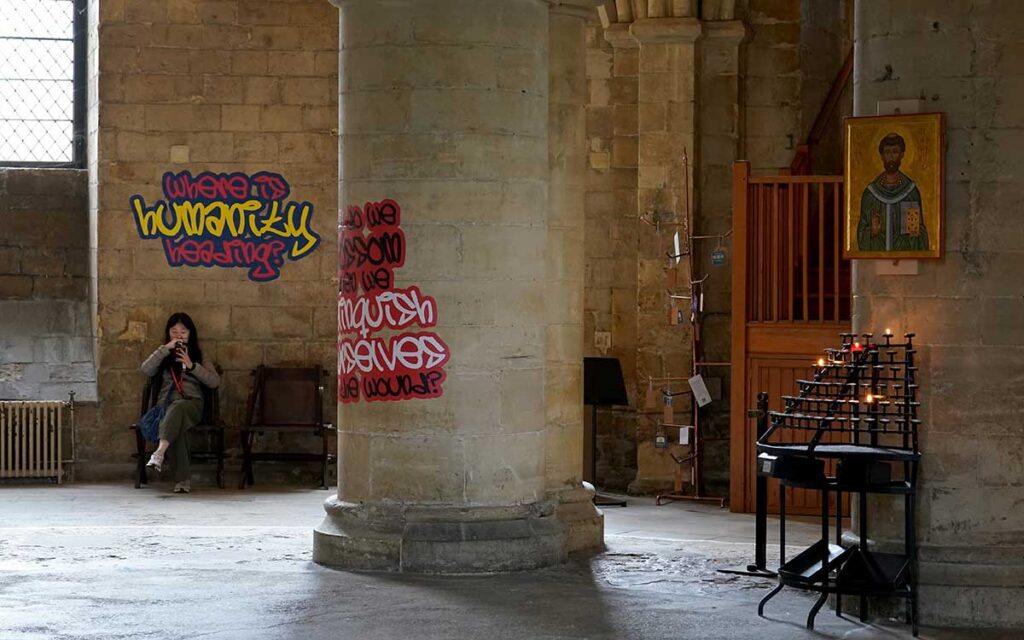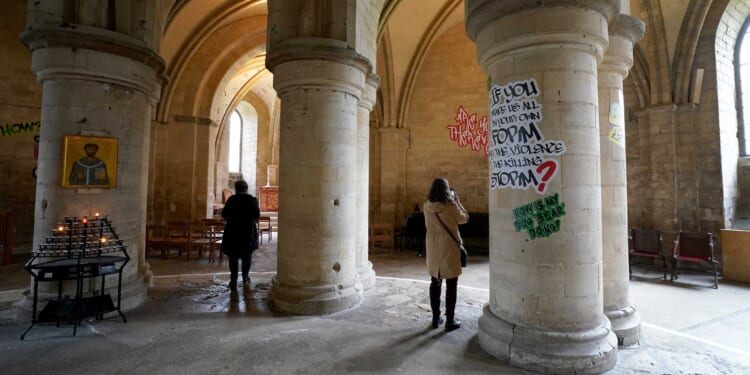If any institution in the world provides evidence of Freud’s concept of the death instinct, it is the Church of England. With unfailing aim, it does whatever will hasten its demise, already quite advanced. Shortly after it appointed Sarah Mullally as Arch Social Worker (formerly Archbishop) of Canterbury, it proceeded to vandalize its mother church, Canterbury Cathedral, not by forbidding but by actually commissioning graffiti on its ancient columns, incensing almost everyone but a small coterie of evangelical Wokeists.
Intellectually nugatory questions—Does our struggle mean anything? What is the architecture of love? Why are you indifferent to suffering?—have been daubed on its columns in bright primary colors. The style imitates the graffiti on a million urban walls, except that even here it misses the mark: the graffiti on a million walls are obviously spontaneous, rough, and done on the sly before anyone can prevent their completion, while the graffiti in Canterbury are clean and sharp-edged, carried out with obvious deliberation. It is the Church of England’s flattery of, and groveling to, the underclass.
Finally, a reason to check your email.
Sign up for our free newsletter today.
The intellectual and moral level of the Church of England—at least of its leadership and guiding spirits—is easily grasped by the justification for this vandalism offered by the Dean of the Cathedral, whose assent for it was needed. He said: “This exhibition intentionally builds bridges between cultures, styles and genres and, in particular, allows us to receive the gifts of younger people who have much to say and from whom we need to hear much.”
Precisely which cultures and genres are bridged by graffiti in an ancient cathedral? Do all cultures want to be bridged? In what way, precisely, are they bridged by graffiti? The Dean does not say. And are all younger people vandals and defacers of public surfaces? This presumption is hardly flattering to the young. The Dean speaks like a typical middle manager of a hospital in the National Health Service, whose managerialese conveys little meaning but excludes nothing and disguises vacuity and sometimes even malfeasance. He is not so much thinking as propitiating the readership of the Guardian.

Another churchman who has become something of a media figure, Fergus Butler-Gallie, said: “In an age when the cross still gets people killed and where it still can shock, when its message is more subversive and more needed than ever: that could have been the centre point of a truly transgressive exhibition.” Butler-Gallie’s complaint was that the graffiti was not transgressive enough.
Jacquiline Creswell, curator of art in English cathedrals, a position which seems to involve the arrangement of events and exhibitions in the Church’s desperate attempt to attract new congregations after having driven away the old ones—the Church being now more interested in modernity than eternity—said:
By collaborating with marginalized communities—including the Punjabi, black and brown diaspora, neurodivergent individuals, and the LGBTQIA+ population—the exhibition promotes inclusivity and representation. It transforms the cathedral into a space where diverse voices can be heard, validating their experiences and fostering a sense of belonging.
It would take an essay in itself to deconstruct this passage, with its myriad evasions, implicit lies, non sequiturs, and so forth. For example, should all voices be heard, and all experiences “validated”—which means, presumably, approved of, or at least not reprehended? How, precisely, will Punjabis be led inclusively into the church by more authentic (and just as hideous) graffiti on the concrete walls of housing projects?

The words of the graffiti are those of Alex Vellis, described on more than one website as “a Greek-British poet, producer, and playwright from Canterbury, Kent. They hold an MA in Creative Writing from the University of Kent.” By their pronouns shall ye know them.
The words inscribed inside the cathedral are greatly inferior, intellectually and aesthetically, and in depth and sincerity, to those I saw joyfully etched on the sides of overladen Nigerian buses: Why die in silence? Let them say, No condition is permanent. They uplifted the downcast; the words in Canterbury Cathedral are occasion only of despair.
Photos by Gareth Fuller/PA Images via Getty Images
City Journal is a publication of the Manhattan Institute for Policy Research (MI), a leading free-market think tank. Are you interested in supporting the magazine? As a 501(c)(3) nonprofit, donations in support of MI and City Journal are fully tax-deductible as provided by law (EIN #13-2912529).
Source link

















